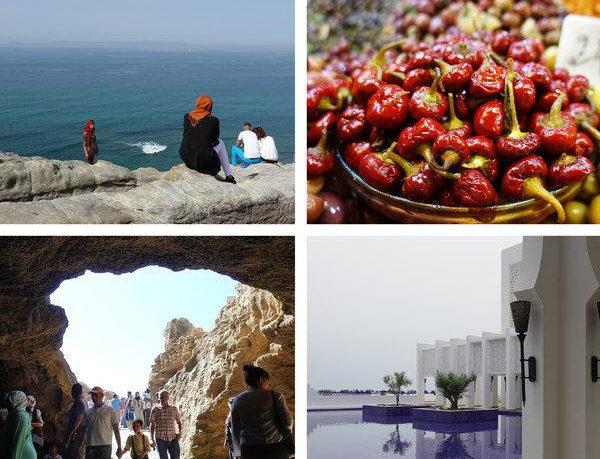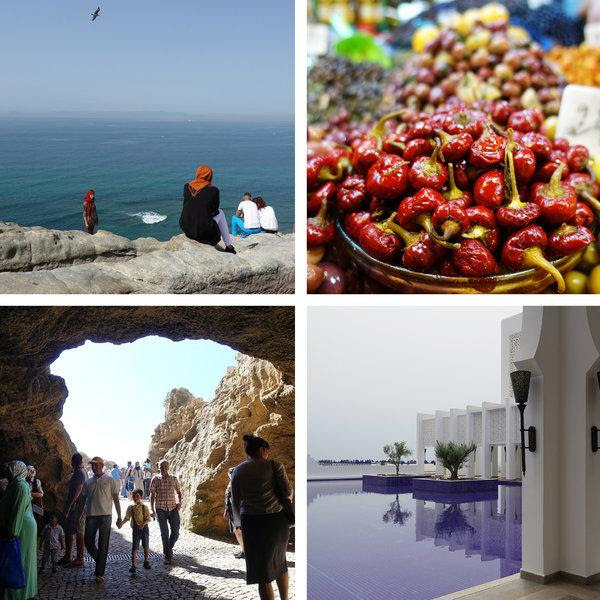The New York Times
This thriving Moroccan city — and its sense of lawlessness and anything-goes ethos — has inspired Western men for decades. Traveling while female, though, proved to be a challenge.
Scenes from Tangier. Clockwise from top right: Peppers for sale in the medina; the Banyan Tree Resort in Tamouda Bay; the nearby Caves of Hercules; ancient Phoenician grave sites overlooking the sea.Jada Yuan/The New York Times
Our columnist, Jada Yuan, is visiting each destination on our 52 Places to Go in 2018 list. This dispatch brings her to Tangier, Morocco, which took the No. 47 spot on the list; it is the 30th stop on Jada’s itinerary.
“Siéntase, siéntase” — sit down, sit down, she said, patting the seat next to her.
I had already noticed her in the terminal of the 11 p.m. ferry we were taking from Tarifa on the southern tip of Spain to Tangier on Morocco’s northern coast. Among all the young, cosmopolitan Spanish tourists in their linen palazzo pants, she stood out. She was wearing a traditional black head scarf and a black embroidered tunic, and looked to be about 40 years older than the next-oldest person there, who might have been 40-year-old me.
Her name was Mina, she said in Spanish. When I asked how to spell it, she gave me her passport, because she can’t read or write. The only words not in Arabic were her last name, M’rabet, and her birth year: 1939.
“I am Moroccan, I have a house in Tangier, but I was born in Spain,” she said. She was coming back from three weeks visiting her sister who runs a hotel near the sea. Over a shared Coca-Cola on the ferry we talked of God and death and that once she had seen Paris and how beautiful it had been.
Subscribe to debate, not division. Get The New York Times for just $1 a week.








